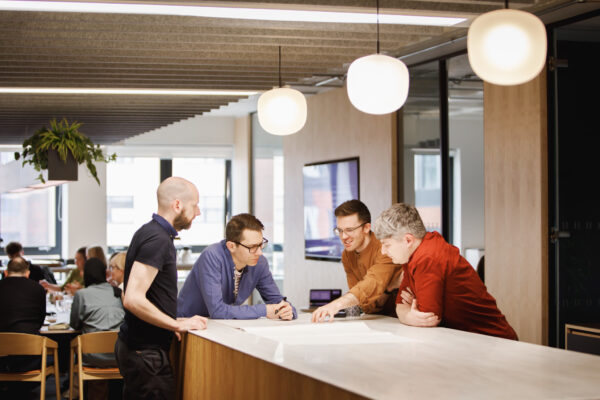Designing Spaces for Collaboration Between Education and Industry
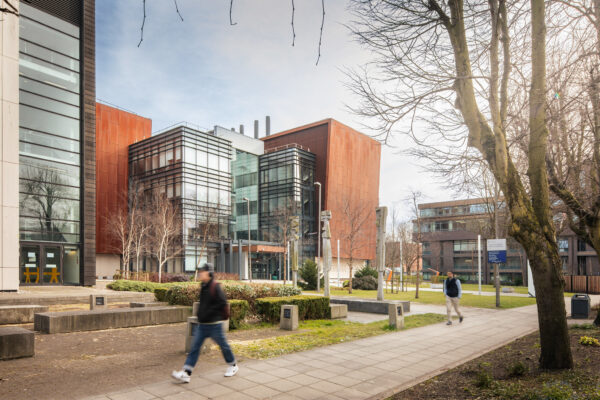
The way we use and value space has transformed over the past decade. While the pandemic accelerate a reassessment of the workplace, longer-term drivers – digitalisation, new partnership models, and a renewed focus on place within the UK’s 10-year industrial strategy are now shaping how we work, learn and innovate.
Education environments are evolving in parallel, with a growing demand for spaces that support new methods of learning, cater for increasingly diverse student populations, and, crucially, enable collaboration with industry partners.
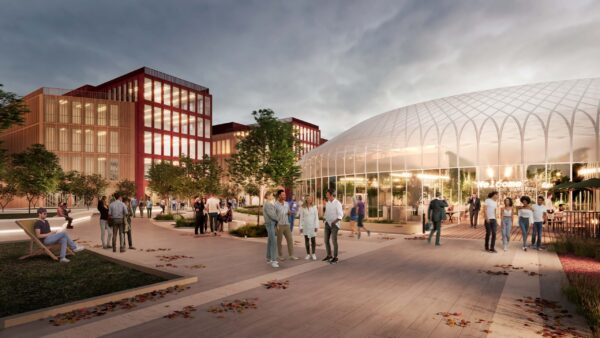
Defining the Shift
At Bond Bryan:Fairhursts, we have long been designing innovation environments for both education and private sector organisations. Increasingly, we are being called on to bring these two fields together—creating spaces that unite academic expertise with industry practice.
This reflects a wider market trend. Complex issues in life sciences, robotics, engineering, manufacturing, and automotive sectors are benefitting from rapid digitalisation and technological advancements but are struggling to deliver solutions in isolation. From single-room or single-building facilities to large, multi-million-pound campuses, there has been a clear shift towards developing these environments that deliberately harness the strengths of educational institutions and industry partners – simultaneously advancing research and developing the skilled workforces these sectors need.
In June of this year, the government reinforced this direction with its Industrial Strategy, setting out a ten-year plan for growth and innovation. Central to this plan is the recognition that deepening partnerships between education and industry will be critical to deliver national ambitions for skills, productivity, and technological advancement.
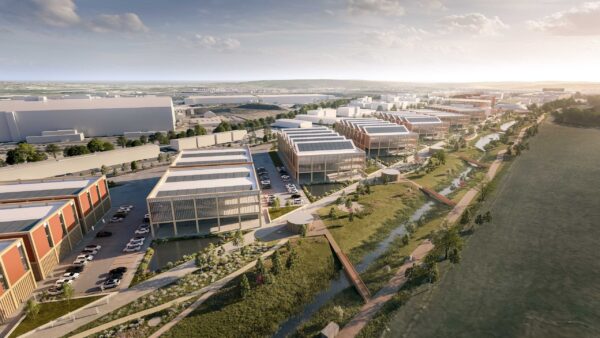
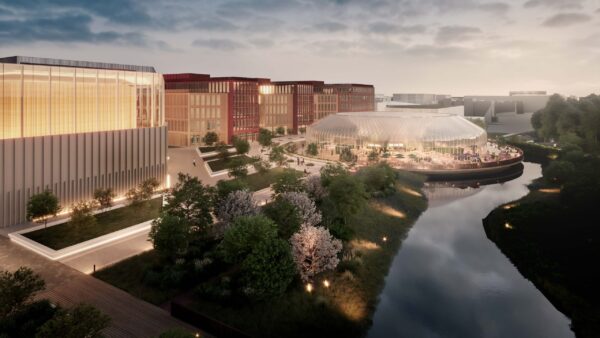
Enabling the Shift
As these partnerships evolve, the spaces that support them must evolve too. Traditional categories of space are becoming less relevant as environments become more adaptable and technologically enabled. Boundaries have blurred, offering the opportunity to re-imagine what learning and working environments should look like.
Designing these spaces around patterns of human interaction, rather than around the siloed needs of departments, disciplines or technologies, is key to fostering genuine collaboration.
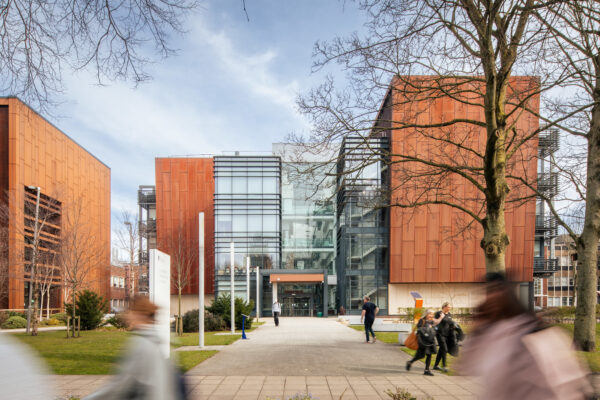
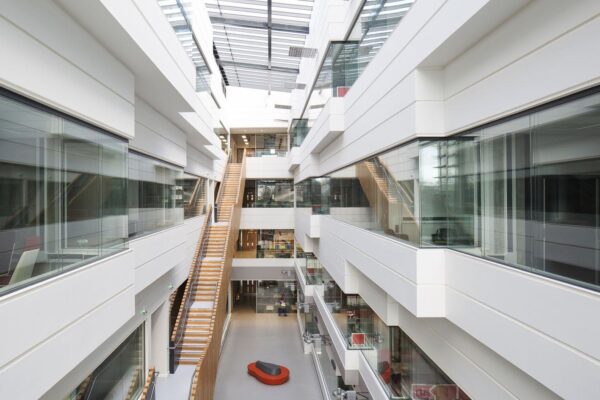
Case Study – Building Scale
A clear example of this approach is the Materials Innovation Factory (MIF) at the University of Liverpool – a unique research hub for materials chemistry and high-throughput formulation research, designed by Bond Bryan: Fairhurst – from the outset – to unite the University and its industrial partners.
Using a ‘research hotel’ model, the facility combines flexible laboratories, adaptable office spaces, and a large, shared collaboration zones that encourage spontaneous interaction and incubate new innovative developments and partnerships.
Since opening, the MIF has played a critical role in advancing discovery and innovation – with over 150 patents filed from research carried out within the facility. It is now recognised as one on Unilever’s most productive global research locations.
Read more about the Materials Innovation Factory here.
“MIF is a world-class research institute that further develops our relationships with industry and was designed specifically to our requirements with collaboration baked into the building, which supports a community of like-minded researchers. It reflects our ambition to provide inspirational spaces for our research teams to discover and innovate.”
Case Study – Campus Scale
The same principles apply at campus scale, where large-scale ecosystems enable ideas to move fluidly across multiple disciplines.
The Runway Park development in Sheffield is another good example of this concept in action. Building on the success of the AMRC campus, which was designed to connect the University of Sheffield with industry partners in advanced manufacturing, the new masterplan extends this model across a wider innovation district.
Here, collaboration is embedded in the fabric of the campus. Individual buildings are deliberately networked together, to create a connected ecosystem – strengthening universities’ roles as regional anchors for innovation, attracting investment and talent while providing students with exposure to real-world challenges. At the same time, it ensures industry partners gain access to academic expertise and emerging skills.
As designers, our role is to translate these strategic ambitions into built environments that make collaboration inevitable rather than optional. By embedding connectivity, adaptability, and shared spaces into the masterplanning process, we help universities and their partners to create ecosystems that not only support today’s collaborations but also can evolve to meet the needs of tomorrow.
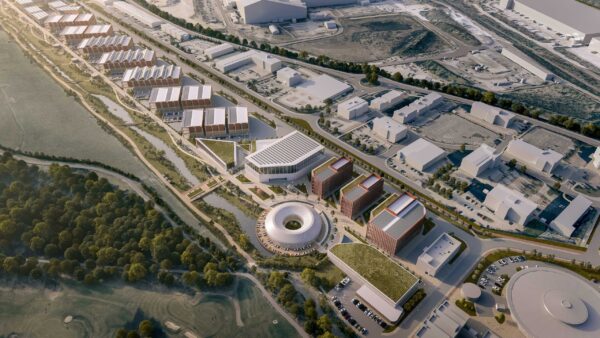
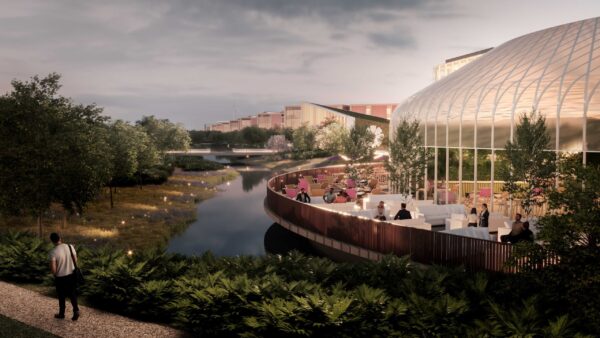
Looking Ahead
The UK’s industrial strategy continues to emphasise place-based growth, positioning universities and innovation districts as catalysts and anchors for economic development. In this context, collaboration between education and industry is not just about advancing research—it is about building regional skills pipelines and driving regeneration.
As this dynamic grows, the need for collaborative spaces will become more significant. Future campuses must be more porous, flexible, and networked, ensuring knowledge and innovation flow freely between academia, business, and society.
For universities, the opportunity lies in building environments that not only serve their own academic communities but also act as magnets for industry collaboration. For industry, these partnerships provide access to cutting-edge research, emerging talent, and purpose-built environments that accelerate innovation and reduce the risks of going it alone.
As designers, our role is to translate this ambition into pioneering facilities and innovative campuses. We need to continue to push boundaries and develop new space models that actively encourage collaboration, challenge traditional definitions of work and learning environments, and embed flexibility for future evolution.
By doing so, we can help shape environments that drive long-term impact in research, education, and economic growth for decades to come.
